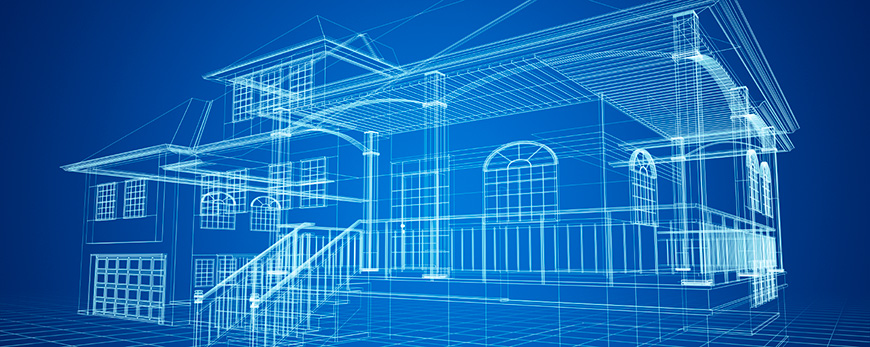Discover Award-Winning Jobs by Prominent CDA Architects
Discover Award-Winning Jobs by Prominent CDA Architects
Blog Article
A Comprehensive Overview of Building Designs and Their Influence on Modern City Planning and Growth
Building styles have long served as a mirror to the social values and technological developments of their time, playing a vital role in shaping modern city planning and growth. From the splendour of Neoclassicism to the practical technique of Brutalism, each design has actually presented special concepts that influence city aesthetics and capability.
Historical Overview of Building Designs

As societies transitioned via the Middle Ages, Gothic style emerged, defined by its verticality and complex detailing, mirroring the spiritual desires of the period. The Renaissance noted a revival of classic perfects, merging art and architecture in innovative means that affected subsequent styles throughout Europe.

Today, architectural designs remain to evolve, driven by globalization and sustainability problems, reflecting a vibrant interplay between heritage and development. This historic introduction highlights the significance of style as a mirror of social advancement and as a stimulant for urban development.
Secret Architectural Styles Explained
The diversity of architectural designs reflects the myriad influences that shape our constructed environment, each symbolizing distinctive attributes and cultural importances. Key architectural styles consist of Classical, Gothic, Baroque, Innovation, and Postmodernism, each representing unique historical contexts and aesthetic approaches.
Classic style, rooted in old Greece and Rome, stresses balance, proportion, and using columns (cda architects). On the other hand, Gothic design, flourishing in the center Ages, is identified by sharp arches, ribbed vaults, and flying buttresses, developing an aerial quality in cathedrals. Baroque style, arising in the 17th century, is noted by majesty, fancy embellishment, and a dynamic interplay of light and darkness
Innovation, which gained momentum in the very early 20th century, prioritizes feature over form, using new products like steel and glass to create minimal structures. Postmodernism, responding against the austerity of Innovation, accepts eclecticism and historic recommendation, usually incorporating lively elements and irony.

Effect On Urban Planning
In shaping the advancement of cities, architectural styles substantially influence city preparation decisions. The selection of building style frequently dictates the aesthetics, performance, and total personality of urban atmospheres.
Additionally, architectural styles can affect zoning policies and land utilize policies. Urban coordinators need to think about the dominating architectural patterns when making districts, guaranteeing that new developments balance with existing structures. This consideration fosters natural city landscapes and boosts area identity.
The implementation of particular building styles can also influence socioeconomic aspects within a city. High-end contemporary designs might attract upscale locals and companies, leading to gentrification, while extra affordable housing options may focus on sensible and lasting designs to fit varied populations. cda architects. Inevitably, the interaction between architectural styles and city preparation creates vibrant cities that mirror both historical context and modern requirements, forming the lived experiences of their occupants
Sustainability and Modern Style
Building designs play a critical function in attending to contemporary difficulties, especially in the realm of sustainability. As urban areas broaden and environmental additional hints worries intensify, contemporary design progressively accepts sustainable layout principles that focus on energy performance, resource preservation, and minimal ecological influence.
Contemporary building activities, such as biophilic design and eco-friendly style, supporter for structures that balance with their surroundings, utilizing all-natural products and promoting biodiversity. These styles often integrate renewable resource sources, such as solar panels and wind turbines, to decrease dependence on nonrenewable fuel sources and reduced carbon impacts.
Additionally, the assimilation of advanced technologies, such as smart building systems, boosts energy administration, optimizing resource usage while making sure resident convenience. Cutting-edge water management strategies, consisting of rainwater harvesting and greywater recycling, more add to sustainable city settings.
Especially, sustainability extends beyond environmental issues; it incorporates social and economic measurements. By cultivating area health and promoting inclusivity, modern-day building designs line up with sustainable advancement objectives. The advancement of architectural techniques continues to shape resilient cities that not just fulfill the demands of the existing but likewise guard the future for generations to come.
Neighborhood Engagement in Style
Area interaction in style serves as an important bridge in between designers and the populaces they offer, making certain that the built atmosphere shows the needs and desires of its official site individuals. This joint procedure invites community members to contribute their insights and choices, promoting a sense of possession and duty towards the areas they inhabit.
Effective community engagement utilizes various methods, such as workshops, surveys, and public online forums, to gather varied viewpoints. These strategies assist in a two-way dialogue, permitting designers to recognize local contexts while empowering residents to voice their worries and desires. This inclusivity not just boosts the design top quality but also advertises social equity by addressing the special difficulties encountered by marginalized groups.
Additionally, community engagement can lead to innovative remedies that may not emerge in a conventional style process. By incorporating regional understanding and social values, designers can produce rooms that resonate even more deeply with customers, enhancing use and sustainability. Ultimately, focusing on area engagement in layout processes results in atmospheres that support social interactions, support well-being, and strengthen area ties, thereby playing a critical duty in forming modern urban landscapes.
Final Thought
Building designs have profoundly influenced modern-day city preparation and growth, showing developing cultural and technical contexts. The integration of historic aesthetic appeals with modern requirements cultivates urban atmospheres that look at this now prioritize sustainability and area involvement. As cities remain to expand and adapt, the ongoing dialogue between architectural heritage and modern-day design concepts will continue to be essential in producing comprehensive, dynamic rooms that boost lifestyle and advertise social equity. The future of urban development rest on this unified equilibrium.
Report this page